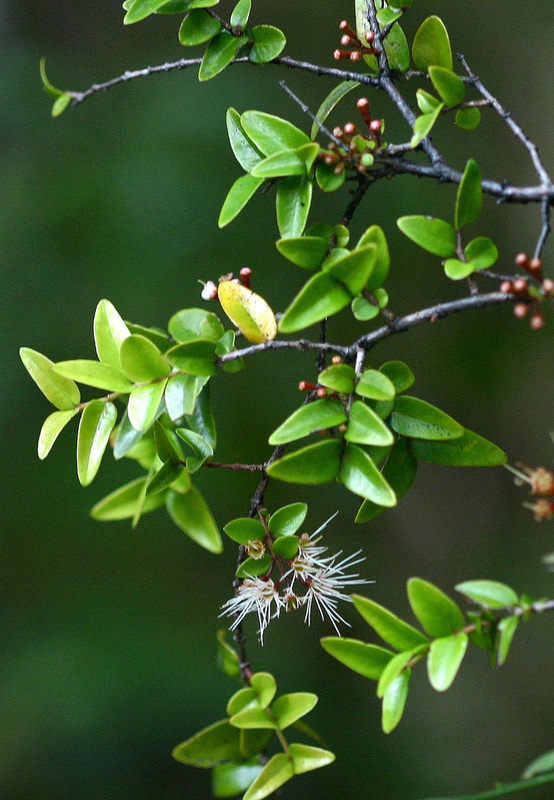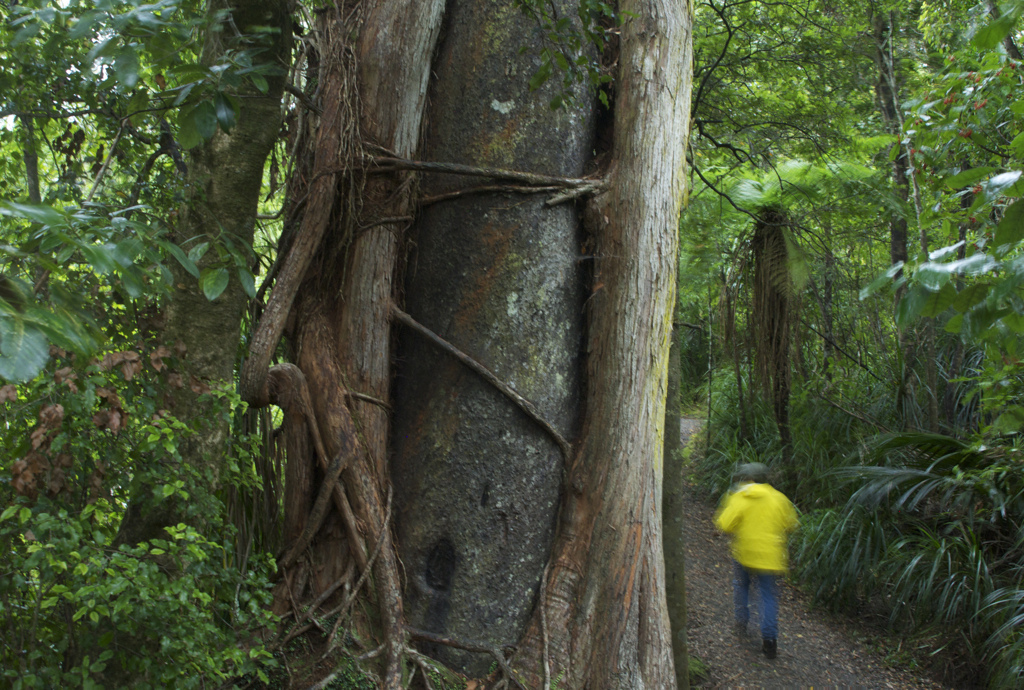The juvenile, whether terrestrial or climbing, pushes out wiry roots from closely-place nodes; adult flowering branches are shrubby divaricating laterals from the ascending stems.
This is a very succinct description of the difference between the climbing, host-hugging juvenile and the cloud-shaped, highly-branched adult stems that form when they reach the sun.
Zotov (1939, p.275) disputes the theory of Kirk (1889, p.263) that the coalescence of the decending stems and lateral binders of this epiphyte imprisons and destroys forest trees.
He states that he has not found evidence of strangulation, and he maintains that the "light demanding" host is destroyed by the intensity of shade thrown by the faster-growing epiphyte.
Other observers have suggested to us that root competition may be the destructive agent or a soil reaction set up by the closely matted fibrous roots.
Kirk (loc. cit.) states that puriri (Vitex lucens), to increase its girth, bursts apart the stems of the epiphyte and, if this be accepted, shade can have but little effect on that species.
A shade maximum is reached when the epiphyte slightly overreaches the crown of its host, yet the host lives through this crucial period and survives while the epiphyte develops large spreading branches with a high open crown affording a sufficiency of light, more than most trees offer to much of their foliage.
Its fascinating that our understanding of the effect that Northern rata has on its hosts has not advanced a whole lot since 1942. It is still considered that this hemiepiphyte does not strangle its host but either out-lives or maybe shades it out. Interesting that Kirk talked about puriri bursting these Northern rata stems apart - what a sight that would be!




 RSS Feed
RSS Feed
